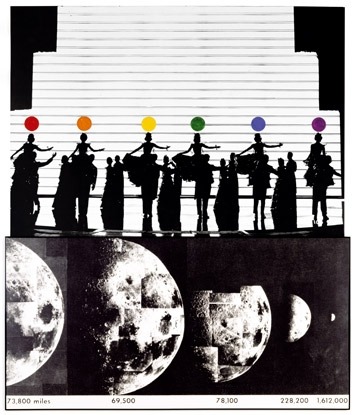Michael Porter, the head of Harvard Business School’s Institute for Strategy and Competitiveness, recently discussed an updated version of CSR (corporate social responsibility) based on a ‘shared value’ - an approach to business strategy in the post-capitalism framework. It’s an idea that tries to realign productivity and financial aims with civil contributions by creating common positions that will nourish the intersection between social value and fiscal performance. ‘Shared value’ is essential to any corporate mission statement, yet embedding it into change management strategies or highlighting its role in defining corporate culture, are not necessarily easy things to do in a convincing way. If done well however, illustrating and communicating your values both internally and externally may shift the perception of your endeavors from those of an enterprise to those of an institution while contributing to the development of your company culture. This is a transition that provides several competitive advantages. Not the least of which is that as company and industry landscapes change, the visualization of these shared values draws a line that provides legacy; stable ground for future growth and positive recognition. How can this be done?
For an increasing number of companies, the visualization of this transformation of ‘shared value’ and institutional identity is created through the collection and presentation of contemporary art. Art patronage, education and inclusion (in business strategy and branding) are the next phase of innovative CSR.


Microsoft Collection Bank of America
The inclusion of art in the workplace is not a decorative gesture. It is not the same as buying some new plants. On the contrary, it can have several positive impacts and play an important role in your business. According to studies by BOSTI Associates (NY) and ICM (London), 73% of employees stated that art in the work place both motivated and inspired them. These studies also showed that art expresses success, combats stress, encourages creativity and diversity appreciation, while directly impacting not only the attitudes of employees, but also of visiting clients.
Art in the work place can encourage employees to think creatively. It can create conversations amongst them while actively constructing an image of corporate culture, values and ambitions. It can also create revenue and diversify the company portfolio. Though art acquisition can also provide great financial return, this is risky for market newcomers, and acquisition in this context should be seen as a cultural, as opposed to a financial, investment. It is no coincidence however, that banks like ING, UBS, The Bank of America, Deutsche Bank and others boast some of the largest and most prominent collections in the world. As Liz Christensen, curator for Deutsche Bank put it: “We’re not buying for investment, but we’re not buying for not investment.” In other words, they don’t think about resale value when acquiring a work, but do the diligence before spending money. Kristin Rogers of the Progressive Collection (one of the most interesting corporate art stories in the US) approaches her position from a slightly different angle, sayings that art is an investment in the people who work for the company: a catalyst for conversation and creative exchange.

Progressive Art collection
While Deutsche Bank and Progressive are amongst those who have built museum quality collections, smaller firms and NGO’s should not be afraid to begin with a smaller investment. Visualizing values and collecting outstanding works of contemporary art does not demand hundreds of thousands of euro in investment. It is important to find a strategy and define goals that achieve the aims, while respecting the means of your organization. When Brussels based lobby association Digital Europe sought to transform their offices, they were not thinking long term about a collection, but rather looking for a first range of works, which deal with individual empowerment – a core issue at the heart of the company’s mission and day-to-day activities.
To put it bluntly, involving a company in the contemporary art market adds sex appeal, and reflects broader social changes that see increasing museum attendance and interest in contemporary art over the last decade. It is a social obligation that provides more benefits than appear on the surface, in the same way a great work of art provides more information than you can receive the first time you encounter it.
by Denis Maksimov and Harlan Levey
Harlan Levey and Denis Maksimov are working together as a curatorial team to help companies, political institutions and expert organisations work out their strategy of activities via contemporary art, including visualisation of values, collecting and management of the collection. Harlan Levey Projects was selected as the only Belgian participate to the First Call curated category of Art Brussels 2014. He has consulted for the United Nations, The European Commission, and the City of Brussels as well as a number of corporate clients including Levi's, MTV, and private collections in Europe and the United States.
Images: courtesy of Forbes, Bank of America, Microsoft, Progressive Art Collection and UBS

